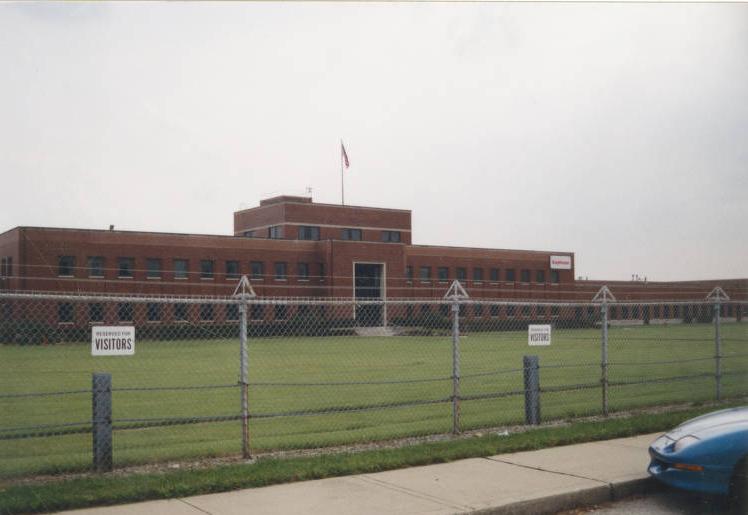Commissioned in 1942 and operated under sole contract by the Lukas-Harold Corporation, the Naval Ordnance Plant (NOP), as it was then called, manufactured the famous World War II Norden bombsight. This bombsight, invented by Carl L. Norden and Theodore H. Barth and fitted on all Army Air Corps and Navy bombers engaged against Axis targets, allowed American bombers to strike targets from high altitudes. The aircraft that dropped atomic bombs on Hiroshima and Nagasaki had Norden bombsights.

The mechanical workings of the bombsight were kept “Top Secret” for 15 years. Most Indianapolis residents were unaware of the plant’s mission until well after the war’s end. The Naval Ordnance Plant also repaired and shipped into combat many varieties of fire control instruments, flight instruments, and gunsights. For its wartime record of service, NOP received the Navy “E” flag for excellence in 1943, 1944, and 1945.
The plant reverted to full Navy control in September 1945 and was designated the Naval Ordnance Plant, Indianapolis (NOPI). It continued its manufacturing and repair roles throughout the . Rechristened the Naval Avionics Facility, Indianapolis (NAF,I) in 1956, its major mission changed primarily to avionics research and development for all military services.
In 1977, in recognition of the facility’s service, the Avionics Facility received an upgrade to full Naval Avionics Center (NAC) and the commensurate responsibility for research and development for all U. S. armed forces. While focusing on research and development, the facility still designed and built many prototype avionics and electronic countermeasure devices—”black boxes”—for mass production contractors. These included guidance packages for Polaris missiles as well as “smart bombs” like the Walleye, a camera-guided missile.
During the 1980s, NAC’s avionics mission expanded to include anti-submarine warfare, weapons, and platforms (aircraft) research and development for the F-14 and the F/A 18. One of NAC’s efforts was the complex guidance system for the Tomahawk Cruise Missile, used with great success in the Persian Gulf War.
The plant’s 3,000 employees put weather- and ship-positioning satellites into orbit; fielded a space-based radio global positioning system; and worked on the Carrier Aircraft Inertial Navigation System for navigation, weapons delivery, and guidance. The facility was renamed the Naval Air Warfare Center Aircraft Division Indianapolis in 1992.
The base closed in 1995 as part of that year’s Base Realignment and Closure Commission. In 1997, the facility became part Hughes Electronics. That same year Raytheon, a U.S. defense contractor, took over the aerospace and defense operations of Hughes.
The Indianapolis facility continued in operation as the Raytheon Analysis and Test Laboratory. It functioned as part of the company’s Intelligence, Information and Services Engineering organization. Through the years, the Analysis and Test Laboratory staff were involved in airborne reconnaissance systems, electronic surveillance systems, electronic warfare systems, airborne and ground-defense systems, flight computers and other avionics, missiles and missile warning systems, weather systems, attack helicopters, command and control systems, communications systems, electro-optic systems, and depot maintenance and supply support systems.
In December 2021, Madison, Mississippi-based Vertex Aerospace acquired the site. The company provides services to defense and commercial companies, including aviation maintenance, contractor logistics support, and systems engineering and integration. With the acquisition, the facility’s name changed to Vertex Technology & Training Solutions division. Around 600 people continue to work at the facility.
In March 2022, Vertex announced that it planned to merge with Colorado Springs, Colorado-based Vectrus Inc., a company that specializes in base operations supply chain and logistics services and information technology missions support, in a $2.1 million all-stock deal. After the merger, Vertex was renamed V2X.

Help improve this entry
Contribute information, offer corrections, suggest images.
You can also recommend new entries related to this topic.